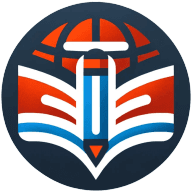7 Ways to Incorporate Student Feedback to Improve Teaching Outcomes
Effective teaching requires continuous improvement and adaptation. This article explores several strategies to incorporate student feedback, enhancing the learning experience and outcomes. Drawing from expert insights, these methods offer practical ways to transform teaching practices and create a more responsive educational environment.
- Adapt Lessons Based on Student Input
- Transform Teaching Through Weekly Check-ins
- Gather Honest Feedback via Anonymous Surveys
- Empower Students Through Focus Group Discussions
- Leverage Data Analysis to Improve Teaching
- Create Feedback Loop with Reflection Sessions
- Enhance Learning Through Peer Assessment Techniques
Adapt Lessons Based on Student Input
Student feedback plays a crucial role in how we continue to refine our approach to tutoring. We regularly ask students what feels most helpful in their sessions, where they might feel rushed, and what areas they'd like to spend more time on. These conversations often reveal small but meaningful adjustments that make learning more effective. We also look for patterns across different students, which helps us identify where a teaching method could be improved for stronger results.
One example came from students who shared that lessons sometimes moved too quickly through problem sets in subjects like math and science. Based on that input, our tutors adjusted their pacing by breaking problems into smaller steps, checking for understanding more frequently, and giving students more opportunities to practice similar questions before moving forward. The results were clear as students gained a deeper grasp of the material and developed greater confidence in tackling new problems independently.
This experience reinforced for us that feedback is not just helpful but essential. When students see their input shaping the way lessons are delivered, they feel more invested in their learning and motivated to put in the effort. It has shown us that real progress happens when teaching is collaborative and students are active participants in the process.

Transform Teaching Through Weekly Check-ins
At Legacy, we see student feedback as more than just a box-checking requirement; it is the pulse of our progress. Each week, we mobilize check-ins not only with students but also with parents, so we can address small issues before they become significant roadblocks. Providing space for honest conversations about the week ahead, ten minutes at a time, is when we are able to grasp the real stories together: misunderstandings in pacing, feeling overwhelmed, the spark of triumph, etc.
One example comes to mind. Students enrolled in our provided STEM courses told us that long live stream lectures were not working for them. They liked the content but logged off feeling disconnected. We pivoted to weekly "mini labs": short bursts of instruction followed by hands-on challenges, peer breakout rooms, and real-time feedback. Participation increased rapidly over the following two weeks, and students were even smiling and laughing as they engaged in our virtual classrooms.
It represented a shift from passive engagement to active engagement, and it all came from those weekly check-ins. That is when education becomes more than a transaction; it is a relational experience. At Legacy, we aren't just delivering a lesson—we are co-creating a relevant, meaningful learning experience. And that makes all the difference.

Gather Honest Feedback via Anonymous Surveys
Anonymous surveys offer a powerful tool for gathering honest student opinions about teaching methods. These surveys provide a safe space for students to share their thoughts without fear of judgment or consequences. By using carefully crafted questions, educators can gain valuable insights into what works well and what needs improvement in their teaching approach.
The data collected from these surveys can be analyzed to identify patterns and trends in student feedback. With this information in hand, teachers can make informed decisions about adjusting their teaching strategies to better meet student needs. Take the first step towards improving your teaching outcomes by implementing anonymous surveys in your classroom today.
Empower Students Through Focus Group Discussions
Student-led focus groups present an opportunity for in-depth discussions about the learning experience. These groups allow students to voice their opinions and share their perspectives on various aspects of the teaching process. By facilitating these discussions, educators can uncover nuanced feedback that might not be captured through other methods.
The interactive nature of focus groups encourages students to build upon each other's ideas, leading to richer and more comprehensive insights. This approach not only provides valuable feedback but also empowers students by involving them directly in the improvement process. Consider organizing student-led focus groups to gain deeper insights into your teaching effectiveness and enhance student engagement.
Leverage Data Analysis to Improve Teaching
Performance data analysis serves as a crucial tool for identifying areas that require improvement in teaching outcomes. By examining various metrics such as test scores, assignment completion rates, and class participation levels, educators can pinpoint specific aspects of their teaching that may need attention. This data-driven approach allows for objective assessment of teaching effectiveness and student progress.
Furthermore, it enables teachers to track changes over time and measure the impact of implemented improvements. By regularly analyzing performance data, educators can make informed decisions about where to focus their efforts for maximum impact. Start leveraging the power of data analysis to enhance your teaching strategies and boost student achievement.
Create Feedback Loop with Reflection Sessions
Regular reflection sessions create an ongoing feedback loop between teachers and students. These sessions provide a structured opportunity for students to share their thoughts on recent lessons, assignments, and overall learning experiences. By scheduling these sessions at consistent intervals, educators can stay attuned to student needs and concerns throughout the academic year.
This approach allows for timely adjustments to teaching methods and course content based on real-time feedback. Moreover, it fosters a culture of open communication and continuous improvement in the classroom. Implement regular reflection sessions in your teaching practice to create a dynamic and responsive learning environment.
Enhance Learning Through Peer Assessment Techniques
Peer assessment offers a unique approach to gathering feedback and enhancing collaborative learning. This method involves students evaluating each other's work, providing constructive criticism, and sharing insights. By participating in peer assessment activities, students develop critical thinking skills and gain a deeper understanding of the subject matter.
This process also allows educators to observe how students perceive and apply the learning objectives. The feedback generated through peer assessment can provide valuable insights into the effectiveness of teaching methods and course materials. Incorporate peer assessment techniques into your teaching strategy to promote active learning and improve overall educational outcomes.

